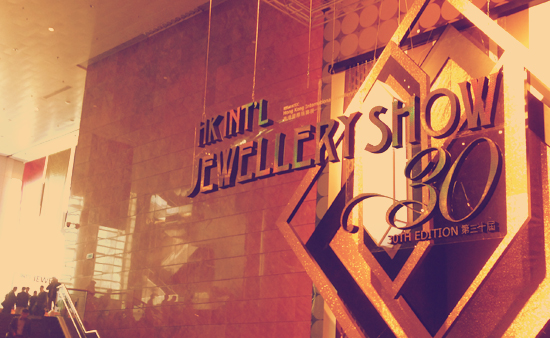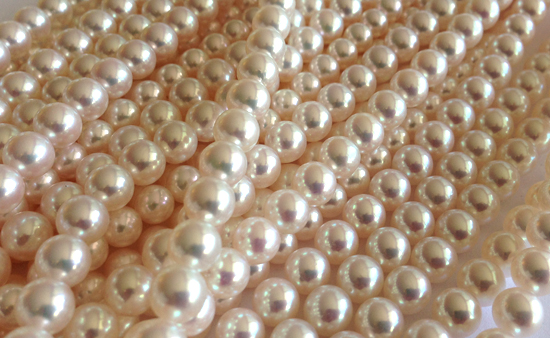
Just Another Day Selecting Fine Pearls
Our buying team returned this week from Hong Kong with a new selection of fine pearls for our jewellery collections.
Hong Kong is the centre of the pearl business today, with dealers and pearl farmers from around the world sorting and selecting through the best (and the worst) of the new season's harvest of cultured pearls.

The size of this jewellery show also makes it one of the biggest in the world, with over 42,000 buyers from 140 different countries. Finished jewellery, brands and designers exhibit alongside the glittering distraction of rows upon rows of diamonds, precious gemstones and pearls.
With three main jewellery fairs in Hong Kong a year, the March and June exhibitions are the best time to view and select from the new harvest. This is because most pearls are harvested when the water is cool. Colder temperatures are believed to improve the quality of the lustre of the pearl.

Most sellers in the main part of the jewellery fair are wholesalers, but a number of the big pearl farmers and trade groups from the pearl producing regions of Tahiti, Australia and Indonesia also hold auctions by invitation to try and obtain the best prices for their new harvest.
In high demand this year were golden pearls from Myanmar, famed for their deep rich, burnt orangey golden colour. Prices for some pearls were reported to be reaching 5-8 times the seller's asking prices.

This is where it can take years of experience to be able to select a lot of fine pearls from the many others, recognising the excellent quality of nacre that gives the exceptional Akoya pearls above their mirror like shine, or the telltale signs of when a pearl's lustre is fading.
A typical pearl auction is held in a large quiet room away from the bustle of the main jewellery fair. Perhaps up to 300 or 400 different lots of loose pearls are arranged in bowls along long tables. Each lot will be comprised of between a few hundred to 5,000 individual pearls, sorted by shape, colour and quality, but usually mixed by size.
Buyers select a bowl that they are interested in, ask for it to be weighed and then search for a clear table with good, natural daylight to look at the pearls in each lot.

Sorting through such a large group of pearls such as the one above can be a daunting and rewarding challenge. It is important to think about the eventual use of the pearls in jewellery, their various grading qualities in terms of lustre, shape, colour and surface. Higher quality pearls will be used for earrings and pendants, whilst slightly less perfect pearls tend to be made into necklaces.
If everything looks good, the final stage of the auction is to make a sealed bid. A price in Japanese yen, dollars or euros (depending on the particular auction) is written on a small ticket and dropped into a ballot-like box.
A short wait follows, until the auction closes, before it is possible to see if your bid is ultimately successful.

Amongst our immediate favourites from this trip's selection were the beautiful dark Tahitian pearls picture above, with their gorgeous natural colours of peacock purple, cherry, aubergine, blue and green.
Over the next few months, we will be introducing these gems to Winterson.
Image Credits:
Copyright of Winterson

